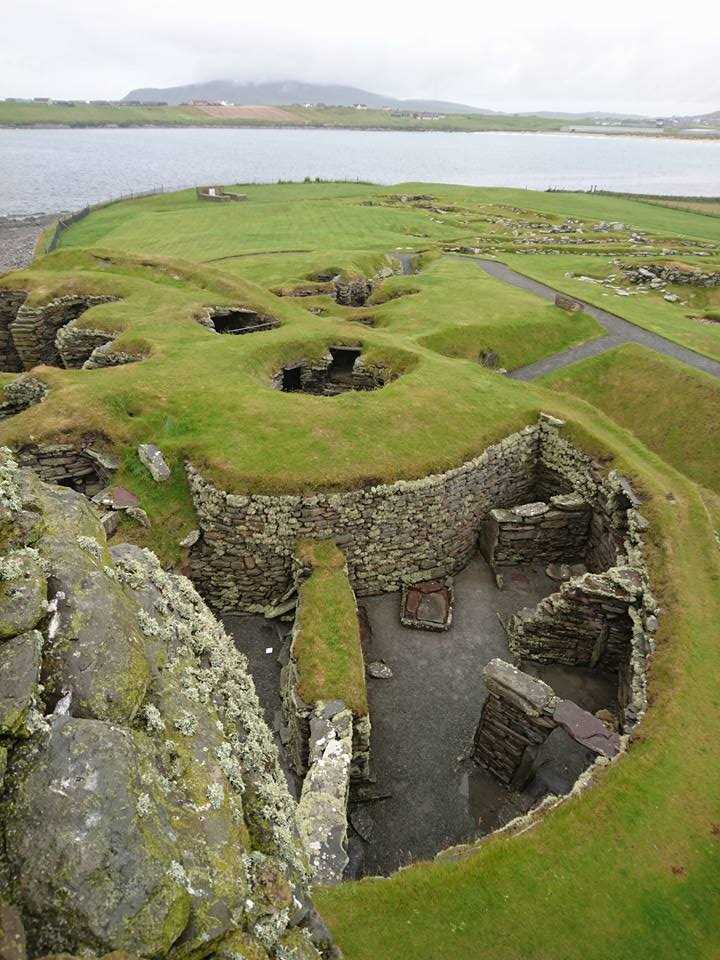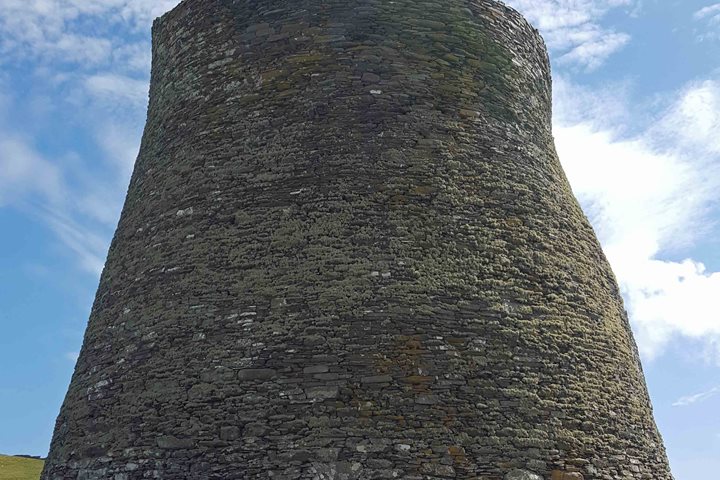After a quiet night in Lerwick, we set off early for a busy morning. Shetland is remarkable for its combination of Scottish and Scandinavian culture. Up until the 17th century, the primary language of Shetland was a variant of Old Norse, the ancestral language of Icelandic, Danish, Swedish, and Norwegian. During the Viking period, Shetland came under Norse rule for many centuries. This places it as something of a bridge between Scotland and Norway, and forms a major part of what is of interest to us in our visit.
A true exemplar of Shetland’s significance throughout history is the site of Jarslhof on the island’s southern point. This site has many different phases of occupation, and is remarkable for the fact that remains ranging from the Bronze Age, to the Iron Age and the Viking Age, right up to the 1600s are visible in relatively small area. This makes it one of northern Europe’s most diverse and important archaeological sites, and to be able to walk in amongst it so easily makes it a truly unique experience.
Along with the archaeology, Shetland is also known for its wildlife. Though ravens and other terrestrial birds have a notable presence, it is the seabirds that really make Shetland a special place for wildlife. As well as views of puffins, fulmars and guillemots from land at the legendary Sumburgh head, we sailed past the cliffs of Nos after departing from Lerwick to take in a spectacle of masses of gannets, both on the cliffs and plunging into the sea from a great height. As if this wasn’t enough, our day ended with an escort of killer whales on our way across a calm North Sea.






